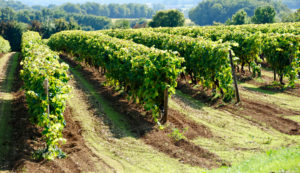Cognac: The Impact of a World Renown Product on the Local Economy
The development of the cognac industry was truly an international affair from the start and remains so to this day. From the Dutch who brought their distillation methods to the Charente, to Irish, England, Danish and Russian distillers who set up long standing cognac houses, to the foreign ownership of many of the major cognac houses, to the nearly 98% export rate of its product, cognac retains its international flavor.
The production of cognac, however also has an immense impact on the local region’s economy. The Bureau National Interprofessionnel du Cognac (BNIC) requires that in order for brandy to be designated cognac, it must follow a rigorous methodology of production that includes local growing, distilling, aging and bottling methods. The grapes used to make the eaux-de-vie for cognac must be grown in one of the regions six Controlled Appellations. The eaux-de-vie must be distilled in the traditional Charentais method. Cognac can only be stored in a BNIC registered storage facility and must be aged in French oak barrels of Limousin or Tronçais-type oak.
The BNIC estimates that nearly 17,000 people earn their living directly from the production of cognac. According to the BNIC, the production of cognac indirectly provides the livelihood of approximately 50,000 people (including the dependents of the 17,000 workers) of the approximately 950,000 inhabitants of the delimited Cognac region. The jobs break down as follows:
Viticulture
Approximately 10,000 people work growing and harvesting the wine produced from the grapes in the six growing crus of the Cognac region. This accounts for half of the agricultural workers of the region.
Distillation
Approximately 2,900 people earn their living working in the region’s distilleries.
Related Occupations
Another 3,900 people are employed in various related activities necessary for the production of cognac. These include approximately 1,000 who work in the cooperage industry in the production of oak barrels, 1,500 who are engaged in the cognac bottling, labeling and packaging industries. The remaining workers provide carrier, brokerage, insurance, equipment manufacture and maintenance and marketing services.
The above numbers do not include the thousands of tourist industry workers who provide hotel, restaurant, festival, sightseeing and tour services. According to a recent study the French area of Aquitaine, Limousin and Poitou-Charentes, where the cognac deliminted area is located, serves approximately 26 million tourists annually.

Visiting Cognac
Most of the larger cognac houses offer on site instructional tours on the making of cognac. There are also at least three summer Cognac festivals. Click here to see Cognac travel ideas.

